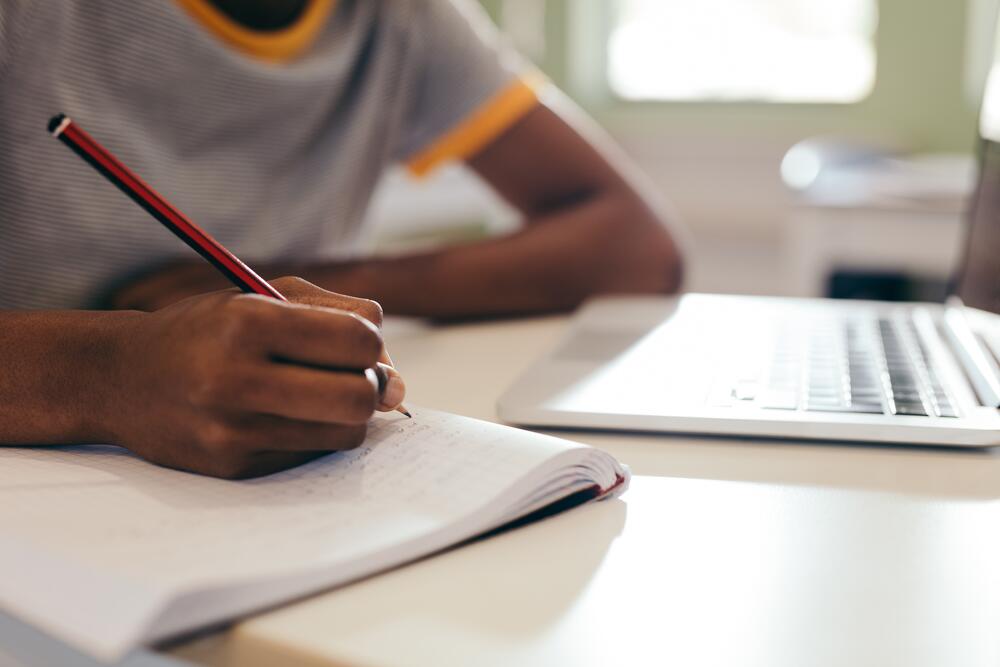
Caption
Georgia’s elementary schoolers will soon be getting lessons in cursive, which some experts say could pay dividends in their reading and writing skills.
Credit: Adobe Stock Image
|Updated: June 24, 2025 9:00 AM

Georgia’s elementary schoolers will soon be getting lessons in cursive, which some experts say could pay dividends in their reading and writing skills.
The next generation of Georgia youths may be able to decipher those birthday cards from grandma without any help from a grown-up.
That’s because Georgia’s new English language arts standards, which take effect in July, will include an emphasis on handwriting, and particularly cursive. The standards will address handwriting starting in kindergarten and move to cursive in third through fifth grade. The previous standards did not have an explicit place for handwriting.
“We want to ensure that our students, when they graduate from the state of Georgia, have all the skills they need,” said April Aldridge, deputy superintendent of teaching and learning at the Georgia Department of Education. “In the world we live in, that means we have to have a varied degree of skills and we need to know when to use the skills in which situations.”
“The skill of handwriting, I wouldn’t say that it’s an antiquated skill because I think most of us use handwriting at some point in our lives every single day, whether it’s in formal or informal situations, so I think it’s just one of the tools that students need to be proficient in,” she added.
While some parents may embrace it, other parents question whether incorporating cursive lessons into English class is the best use of instruction time.
Some said students would be better served by using their instructional time to learn to type or become more savvy with technology.
Brittany Klein, a parent of children in the Cherokee County School System, said she taught her daughter cursive during the COVID-19 pandemic and her son learned it in school, but don’t ask either of them to write in cursive today.
“I am not opposed to cursive,” she said. “I just think if they aren’t going to use it regularly it’s a wasted skill. My kids aren’t even in high school yet and they completely forgot.”
But Sarah Welch, an English language arts program specialist with the Georgia Department of Education, said there’s a greater benefit to mastering handwriting than signing on the dotted line or interpreting grandma’s birthday wishes.
When kids are fluent writers, they can dedicate more brain power to expressing their thoughts instead of moving their pencils.
“If they’re putting so much emphasis on forming the letters and writing the words, that’s taking away their ability to really focus on organizing and expressing their ideas clearly,” Welch said. “And so the research actually shows that cursive handwriting – which is faster than print – really, it enhances their writing fluency. It also supports spelling, but aside from that it really frees up their cognitive resources to let them dig into those higher level reading and higher level writing tasks and being able to organize and express their thoughts because that’s where their minds can go.”
Reinhardt University education professor Debby Pinion, who teaches teachers about reading and dyslexia, said she thinks the new standards will be good for all students but could be especially helpful for children with dyslexia.
That’s because unlike writing block letters, which involves a lot of picking up and putting back down your pencil, when you write in cursive, each word is its own discrete unit.
“With cursive handwriting, it’s a continuous motion until the end of the word,” she said. “So students who are having trouble with position and writing then have an easier time because it just flows per word instead of a manuscript, which is just one letter at a time. So they don’t have to stop and think, ‘which way do I go? Where are the lines? What do I do?’”
“The key word is fluency,” she added. “Just like when we read fluently, that’s not really how fast, but really how smoothly we read. And the same thing is for writing. It helps with fluency so that you’re not starting and stopping, which then impedes your thought process when the object of the game is to write something. So if how we’re writing decreases the flow of our brain fluency, then that’s a problem for students with dyslexia. But cursive handwriting, like any strategy that is used for a child with dyslexia, helps all children. It raises all the ships in the sea.”